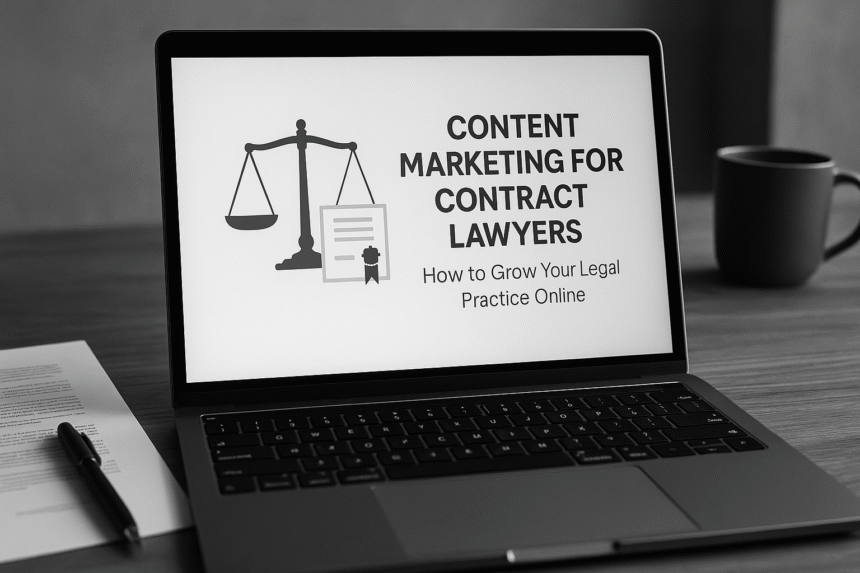Content Marketing for Contract Lawyers: How to Grow Your Legal Practice Online
In today’s digital world, clients are more likely to find a lawyer through Google or LinkedIn than by asking a friend. That’s why content marketing for contract lawyers has become one of the most powerful strategies for growing a legal practice. It allows lawyers to showcase their expertise, build trust, and attract the right clients—without spending heavily on ads.
In this guide, we’ll cover the essential components of content marketing for lawyers, including what to write about, where to publish, how to stay ethical, and how to track your results.
Why Contract Lawyers Should Use Content Marketing
Contract law clients often search online for answers to specific questions like:
- “What should I include in a service agreement?”
- “Can I cancel a contract after signing?”
- “How do termination clauses work?”
If your content provides helpful, easy-to-understand answers, potential clients will start seeing you as the go-to authority.
What to Write About: Topics That Attract Ideal Clients
Focus on solving your client’s most common problems. Great content ideas include:
- How-to guides: “How to Draft a Freelance Contract That Protects You”
- Contract breakdowns: “5 Key Clauses to Watch in Commercial Agreements”
- Mistake warnings: “Common Contract Errors Small Businesses Make”
- Explainers: “Difference Between MOUs and Binding Contracts”
- Legal trends: “What the New Employment Law Means for Your Contracts”
Your goal is not to give away legal advice, but to educate and position yourself as the logical next step when the reader needs help.
Best Platforms to Distribute Your Content
Choosing the right platform can amplify your message:
1. LinkedIn
- Ideal for B2B and professional service content
- Use posts, carousels, and long-form articles
- Engage with comments to boost visibility
2. Your Blog
- Helps with SEO and builds long-term content equity
- Add internal links to service pages
- Include a call to action at the end of each post
3. YouTube (or video snippets on LinkedIn)
- Record short explainer videos
- Turn FAQs into visual content
- Add captions for accessibility
4. Email Newsletter
- Build a list of prospects and clients
- Share new articles or quick tips weekly
Repurposing Content: Do More With Less
One blog post can turn into:
- A LinkedIn post + carousel
- A short video script
- 3 email tips
- A downloadable checklist
Use tools like Notion or Trello to track what you’ve published and where. Consistency beats volume.
Ethical Considerations: Stay Within the Rules
As a lawyer, your content must be:
- Informational, not advisory
- Accurate and up to date
- Clear about jurisdiction (state/country law differences)
- Free from guarantees or misleading claims
Include a standard disclaimer like: “This article is for general information only and is not legal advice.”
Tracking ROI: Is Your Content Working?
To measure the impact of your content:
- Track website traffic (Google Analytics)
- Check SEO rankings (using tools like Rank Math or Ubersuggest)
- Monitor LinkedIn engagement (views, likes, comments)
- Track inquiries and form submissions
- Ask: “How did you hear about me?” on intake forms
Set quarterly goals and adjust based on what resonates most.
Conclusion: Start Small, Stay Consistent
Content marketing doesn’t need to be overwhelming. Start with one blog post a month or one LinkedIn post a week. Focus on delivering helpful content that speaks to your client’s pain points.
Over time, your content library becomes your best business developer—working 24/7 to attract and convert leads.



Leave a Reply